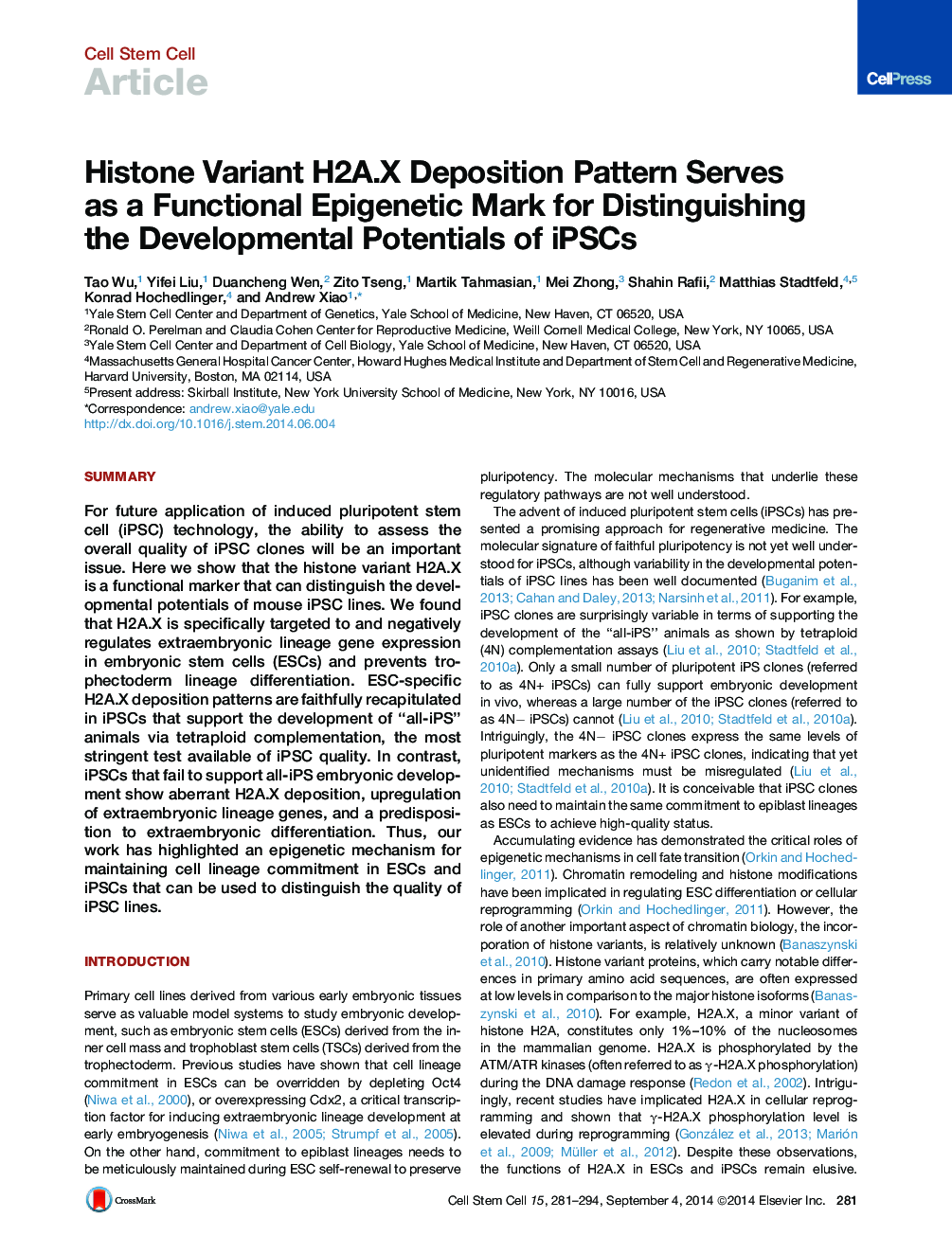| Article ID | Journal | Published Year | Pages | File Type |
|---|---|---|---|---|
| 2077344 | Cell Stem Cell | 2014 | 14 Pages |
•H2A.X is specifically targeted to extraembryonic lineage genes in ESCs•H2A.X plays a critical role in repressing extraembryonic lineage differentiation•H2A.X deposition pattern is a functional epigenetic marker of iPSC quality•Defective H2A.X deposition predisposes iPSCs toward extraembryonic lineages
SummaryFor future application of induced pluripotent stem cell (iPSC) technology, the ability to assess the overall quality of iPSC clones will be an important issue. Here we show that the histone variant H2A.X is a functional marker that can distinguish the developmental potentials of mouse iPSC lines. We found that H2A.X is specifically targeted to and negatively regulates extraembryonic lineage gene expression in embryonic stem cells (ESCs) and prevents trophectoderm lineage differentiation. ESC-specific H2A.X deposition patterns are faithfully recapitulated in iPSCs that support the development of “all-iPS” animals via tetraploid complementation, the most stringent test available of iPSC quality. In contrast, iPSCs that fail to support all-iPS embryonic development show aberrant H2A.X deposition, upregulation of extraembryonic lineage genes, and a predisposition to extraembryonic differentiation. Thus, our work has highlighted an epigenetic mechanism for maintaining cell lineage commitment in ESCs and iPSCs that can be used to distinguish the quality of iPSC lines.
Graphical AbstractFigure optionsDownload full-size imageDownload high-quality image (244 K)Download as PowerPoint slide
